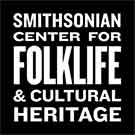SMITHSONIAN CENTER FOR FOLKLIFE & CULTURAL HERITAGE
A Man of Peace: Grand Master Kim’s Vision for Chicago and the World
Grand Master Kim believed that peace begins when individual people express the harmonious energy of peace in their daily lives.
:focal(600x400:601x401)/https://tf-cmsv2-smithsonianmag-media.s3.amazonaws.com/filer_public/c1/1d/c11d49e5-f846-4806-97ee-206b99f72d0c/grand-master-kim.jpg)
My father-in-law would tell anyone who would listen that Chicago has the mission to become a model city of peace. He was big on missions. He often said that every human being shares a similar one: helping to create world peace. Many people brushed off his words, but I took them to heart and count them as a blessing. He was convinced that Peace Day could inspire people to step up and become peacemakers, starting in Chicago.
I first met him in 1978. I had taken a short course he taught at DePaul University and was immediately struck by his calm presence. A Korean immigrant, MyungSu YuSung Kim spoke in heavily accented English. The first words I heard him speak were, “If you can’t understand what I’m saying, try to understand though vibration.” We got down on the floor to do yoga. We got back in our chairs for breathing meditation. He drew diagrams depicting levels of the mind on the board. He talked about inner peace and world peace being interdependent. He said each human being is a small universe. Some of it went over my head, but I was intrigued. I found the simplicity of his Peace Breathing practice refreshing.
Over time, I learned that Grand Master Kim had trained in kendo, karate, judo, and taekwondo while growing up in Na Ju, Korea, where he was born in 1927. Living in a country devastated by World War II and the Korean War, he taught traditional taekwondo to help bring order and purpose back into society.
By the early 1960s, thousands of students were training in his branch schools in Korea. But at one point, his health broke down. He began to lose hope, even contemplating suicide so as not to burden his family. A friend loaned him a book on traditional healing practices. Grand Master Kim devoted himself to these practices and, within a year, regained his health. This led him to include meditation and yoga as part of traditional taekwondo training, unheard of at the time.
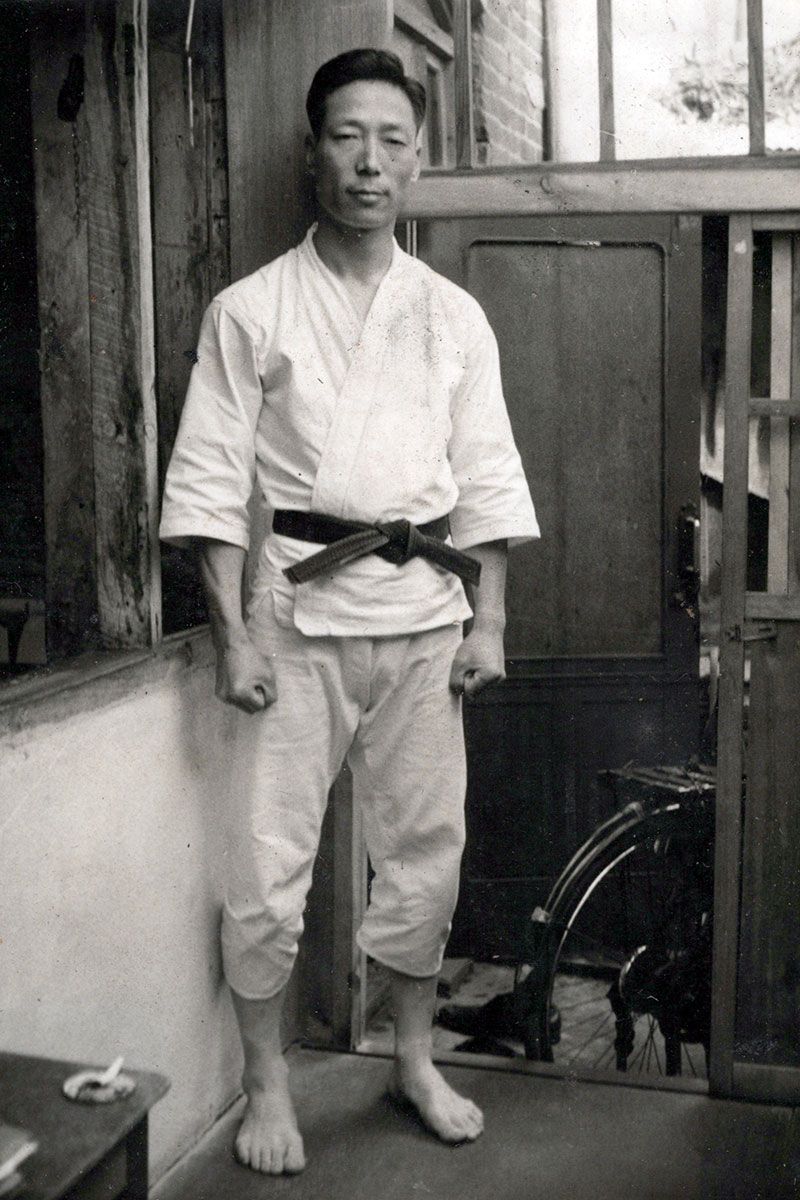
Peace Breathing
Bolstered by his research along with the insight and inner awakening he gained through meditation, Grand Master Kim saw world peace as the most pressing issue of modern time. And he was certain that his mission in life was to do large-scale work in support of this. Through his research, he also came to understand that mu-do, a general term for martial art, was a practice of deep peace and, actually, a way to stop fighting and build a better society. He wrote a creed for his students to recite before each class: “With pure minds and bodies as strong as steel, we express the heart of Korea and provide peace to the world.”
Before long, he moved to the United States, reasoning that if peace could take hold there, it would more rapidly spread because of direct cultural connections worldwide. He opened The Peace School on Chicago’s north side in June 1972.
By then, Grand Master Kim had created a simple practice, Peace Breathing, that became his core teaching. Inhale thinking world, exhale thinking peace. It came to him one day in meditation and was precisely what he was seeking. Everyone breathes. Everyone thinks. So everyone, no matter their age, race, faith, culture, background, or condition, could Peace Breathe. It combines our most fundamental life source, breath, with the bright and expansive energy of peace. It is an easy practice with profound ramifications, helping people bring peace to themselves and simultaneously send the energy of peace out to the world.
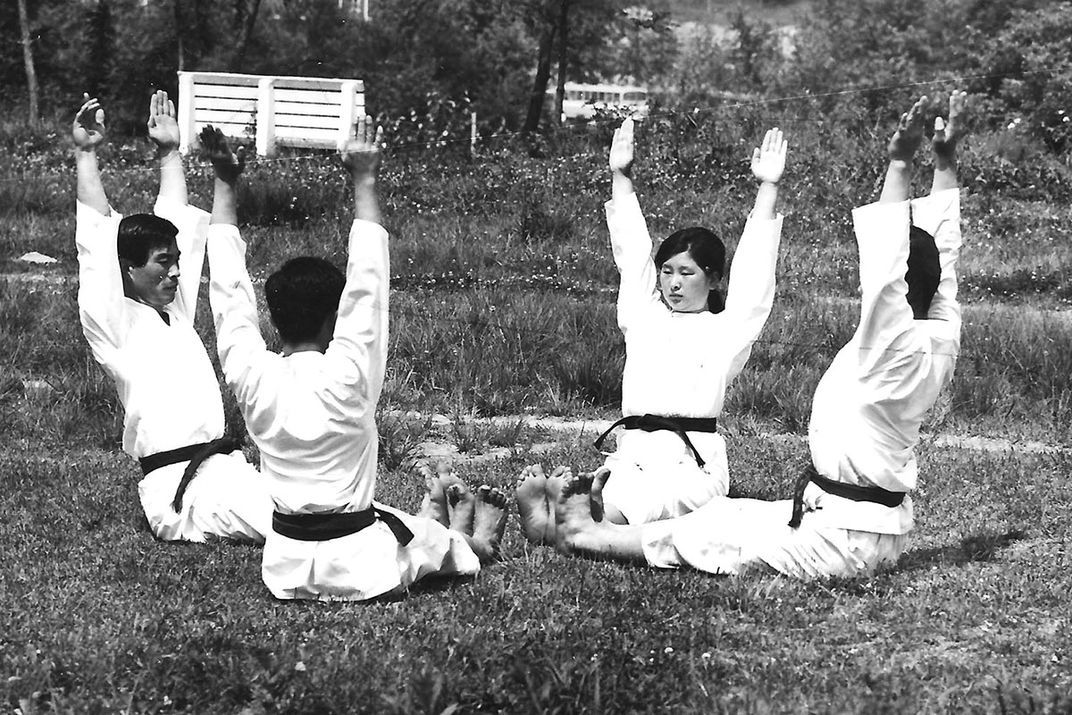
Building Peace Day
One day in late spring 1978, Grand Master Kim held a meeting to plan an event he called Peace Day. It was facilitated by Instructor Charles Kim. I thought, Who’s he? Instructor Kim turned out to be Grand Master Kim’s eldest son and my future husband. At the meeting, Grand Master Kim talked about the importance of creating a special day for people to reflect on peace and celebrate each other’s cultures to build unity. He envisioned Chicago as the model for other cities, and he saw Peace Day as a way to wake people up.
“We are all part of one human family,” he told us.
Similar to Eleanor Roosevelt’s idea that human rights begin in “small places, close to home,” Grand Master Kim believed that peace begins when individual people express the harmonious energy of peace in their daily lives, sparking the natural growth of peace within families, schools, communities, cities, nations, and, ultimately, the whole world.
He wrote Chicago’s mayor asking for support. We were all thrilled when Mayor Michael Bilandic responded with a proclamation for Peace Day in Chicago on September 7, 1978. A modest crowd gathered in a downtown plaza for One Minute of Silence and a program with speakers, Korean traditional dance, and a demonstration of Peace Breathing and yoga.
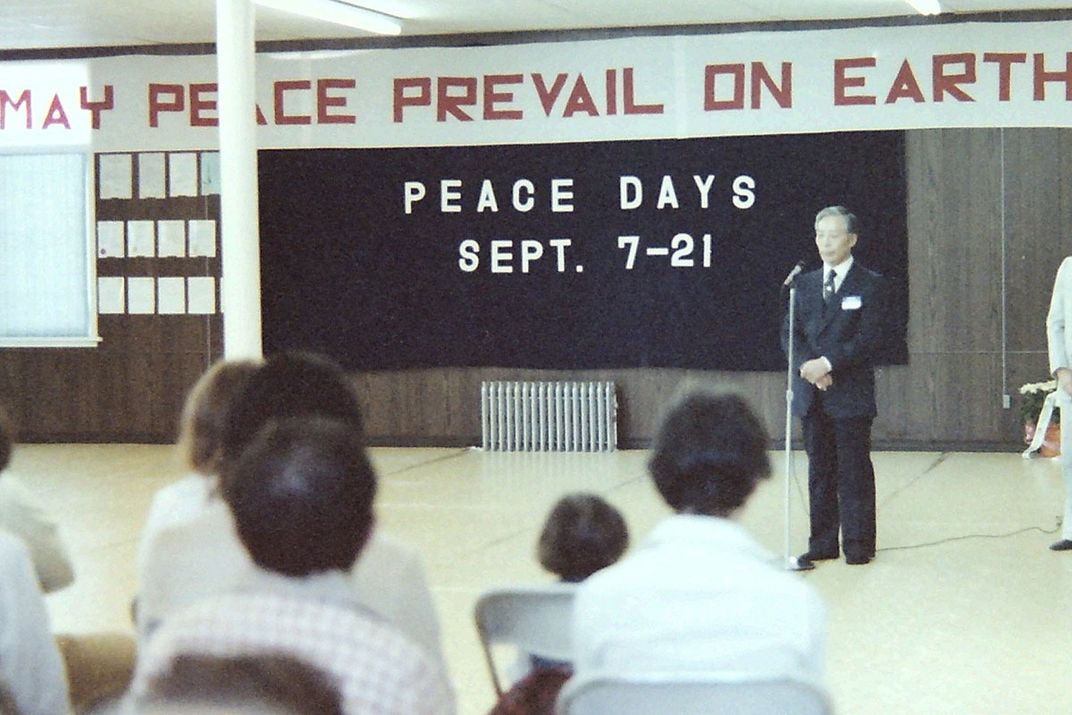
Over the next few years, a group of volunteers helped organize the annual events that slowly grew in size. Some typed stacks of letters addressed to governors and mayors across the country, as Grand Master Kim invited cities and states to join Chicago in proclaiming Peace Day. He asked that One Minute of Silence for World Peace be included in each proclamation. By the mid-1980s, he received Peace Day proclamations from governors in all fifty states and mayors in over 540 cities.
Meanwhile, others were planting seeds for a global day of peace. That dream was realized in November 1981 when a United Nations resolution established the International Day of Peace. The first observance took place on September 21, 1982. Grand Master Kim decided to expand our observance into Peace Days, September 7 to 21. The UN recognized the work of The Peace School by designating it a Peace Messenger organization in 1987. Grand Master Kim attended a ceremony at the UN headquarters in New York to accept the Peace Messenger certificate.
By the mid-2000s, we began inviting international diplomats from the Chicago Consular Corps to participate in the annual event, along with public officials who were part of the newly formed Chicago Build the Peace Committee. We also began providing Peace Day materials annually to every Chicago Public School, asking for in-school peacebuilding activities on the International Day of Peace.
Chicago’s downtown event has since attracted thousands of participants, including students from local elementary and high schools.
World Peace Flag Ceremony
The highlight of Peace Day Chicago is the Call to Peace and World Peace Flag Ceremony. It combines a procession with live music and a chance for everyone in attendance to express their wishes, thoughts, or prayers for peace by calling out “peace in…” each country while, one by one, the national flags are presented on stage.
An extraordinary amount of work goes into this. Flag bearers are needed for each of the 193 UN member states plus the UN flag, Indigenous Unity flag, and Earth flag. They are carried by students, diplomats, peace activists, members of community-based organizations, and volunteers from all walks of life. We visit schools to teach students flag etiquette and practice the Call to Peace in preparation. We strive to match flag bearers with the country of their heritage and invite members of cultural organizations like Chicago Cultural Alliance to carry the flag of their home country, often wearing traditional clothing.
When Reem Fakhoury was a student at Roberto Clemente High School, she carried the flag of Jordan in the ceremony. The experience ignited newfound pride in her Middle Eastern roots. She realized that she could openly present herself as a Middle Eastern woman, revealing part of her identity that she had previously kept hidden.
“I never had that kind of role model growing up,” Reem said. “Peace Day gave me a chance to be that person for other Middle Eastern girls.”
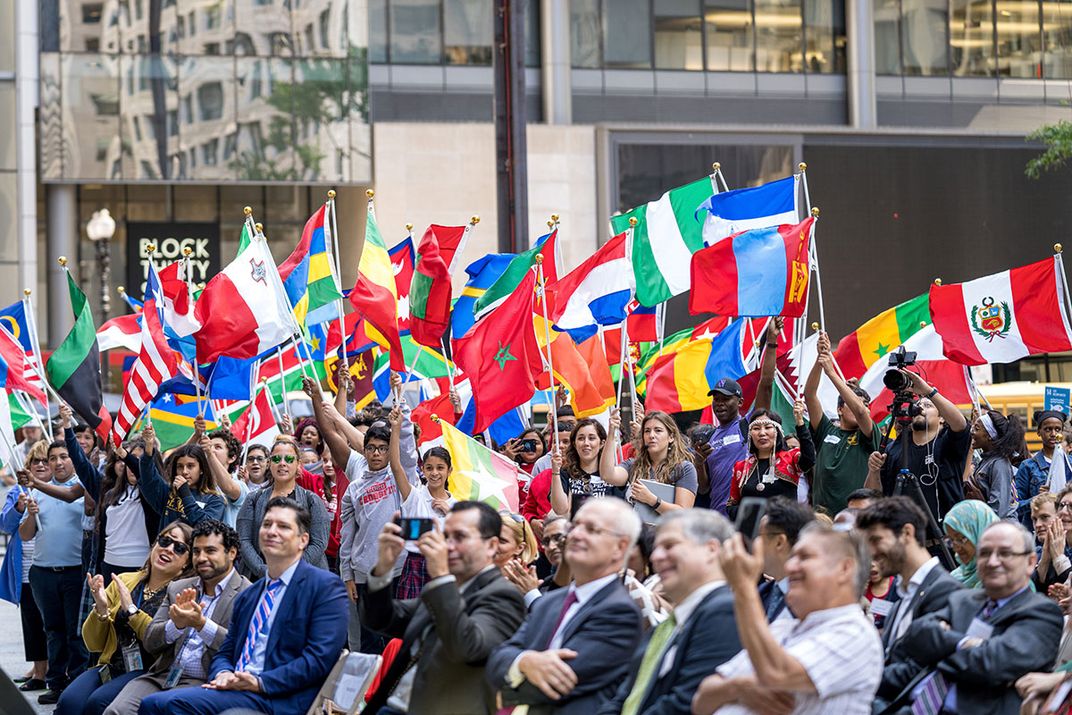
Peter Magai Bul carries the flag of South Sudan in the procession with the hope that all peoples can learn to live together. He knows all too well the need for intercultural understanding and cooperation. At eight years old, Peter was forced to leave his family and flee from his village due to civil war. He banded together with thousands of other children who have become known as the Lost Boys of Sudan. Barefoot, hungry, thirsty, and afraid, they walked 1,000 miles by night and hid from the dangers of war by day on just the first leg of their long journey.
Peter is deeply moved by the sight of the world’s flags raised together in unity. Reflecting on Peace Day, he says, “The call for peace in the countries of the world is a mission of a lifetime for those of us who care.”
A Connected World
The intercultural nature of Peace Day draws together many Chicago-based organizations. For example, Greenheart International’s work focuses on cultural exchange, fair trade, and social transformation. Through its programs, students come from around the world to live with host families in the United States; U.S.-based youth and adults travel to teach, volunteer, and gain firsthand cultural experiences abroad.
Dr. Mark Weatherly, a Greenheart Exchange “dad” for the past twenty-four years, has hosted more than forty international students in his home. “At a time when our media likes to portray America (and the world) as very divided, we find a lot of similarities,” he says.
Greenheart considers its work to be a catalyst for global transformation. As CEO and co-founder Laura Rose puts it, “We believe a connected world can be a peaceful world.”
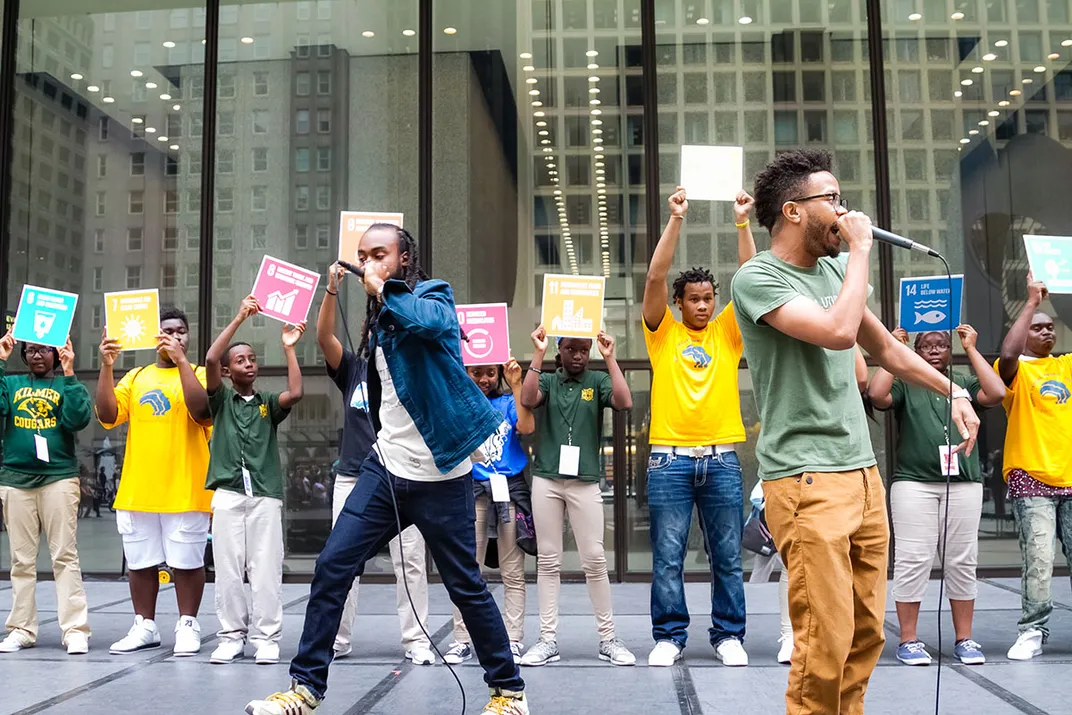
Pastor Victoria C. Brady, president and CEO of Annie B. Jones Civic Arts Center (ABJ), was immediately drawn to Peace Day and The Peace School’s use of positive language like “peacebuilding” as opposed to “anti-violence.” A longtime peace activist on Chicago’s South Side, Pastor Victoria runs the nonprofit which was named after her grandmother and founded by her mother. She notes, “As an organization, we look to shape and spark lasting changes for Africans and the diasporan community.” ABJ offers African-centered arts-based leadership development, empowerment activities, and opportunities for intergenerational engagement.
“It has been said that a child can’t be what they can’t see,” Pastor Victoria says. Through ABJ programs, she creates opportunities for youth to meet with role models like present-day freedom fighters, human rights defenders, activists, historians, and leaders of the Afrodescendant Nation. She brings youth to The Peace School for Peace Breathing and to Peace Day to broaden their worldview.
Peace Day partner Henry Cervantes is program manager of The Peace Exchange, a Holy Family Ministries program for youth from Chicago’s underserved, under-represented communities most impacted by violence. “Violence is the direct result of oppression,” Henry says, and his activism is based on his own Indigenous traditions and cultural roots. For example, the organization’s Peace Builder program provides high school and college students with opportunities to learn about the causes of violence and ways of peace. This includes nonviolence and peacebuilding training in Chicago, followed by travel abroad where students learn directly from peacemakers in other Indigenous communities.
Henry always finds time to collaborate on Peace Day, saying, “Peace Day is a reminder that we are citizens of the world. I stay involved because, as an activist, it is important to demonstrate, and by demonstrating I’m talking about our love for a more peaceful human existence.”
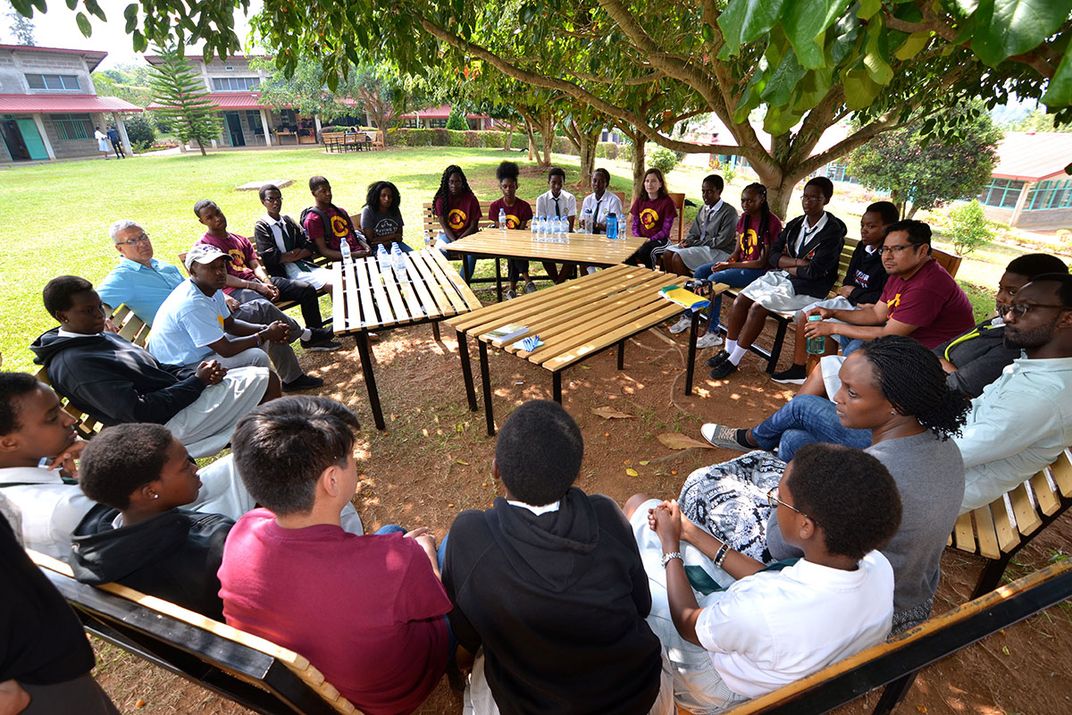
There are so many stories from individuals and organizations approaching peace from all different angles. Thanks to Peace Day, we have a global, annual event to bring us together and anchor our efforts. Peace Day strengthens the connections within this community of communities.
It was my great fortune to have encountered my father-in-law—an extraordinary peacebuilder, visionary and pioneer—some forty-five years ago. Grand Master Kim’s son Charles and I married sixteen years after we met at the first Peace Day meeting—another blessing. My husband, as Master Kim, has headed The Peace School since his father’s passing in 1999. He inspires me every day. I didn’t start out thinking of myself as a peacemaker, but my father-in-law’s message clearly resonated. With tools like Peace Breathing and traditions like Peace Day, I have been able to integrate peace into my daily life and make peace my life’s work.
Is Chicago a model city of peace? We are not there yet. But those of us continuing Grand Master Kim’s work are undeterred as well as grateful to be carrying on his legacy.
Jennifer Kim is director of The Peace School and chair of the Chicago Build the Peace Committee.
